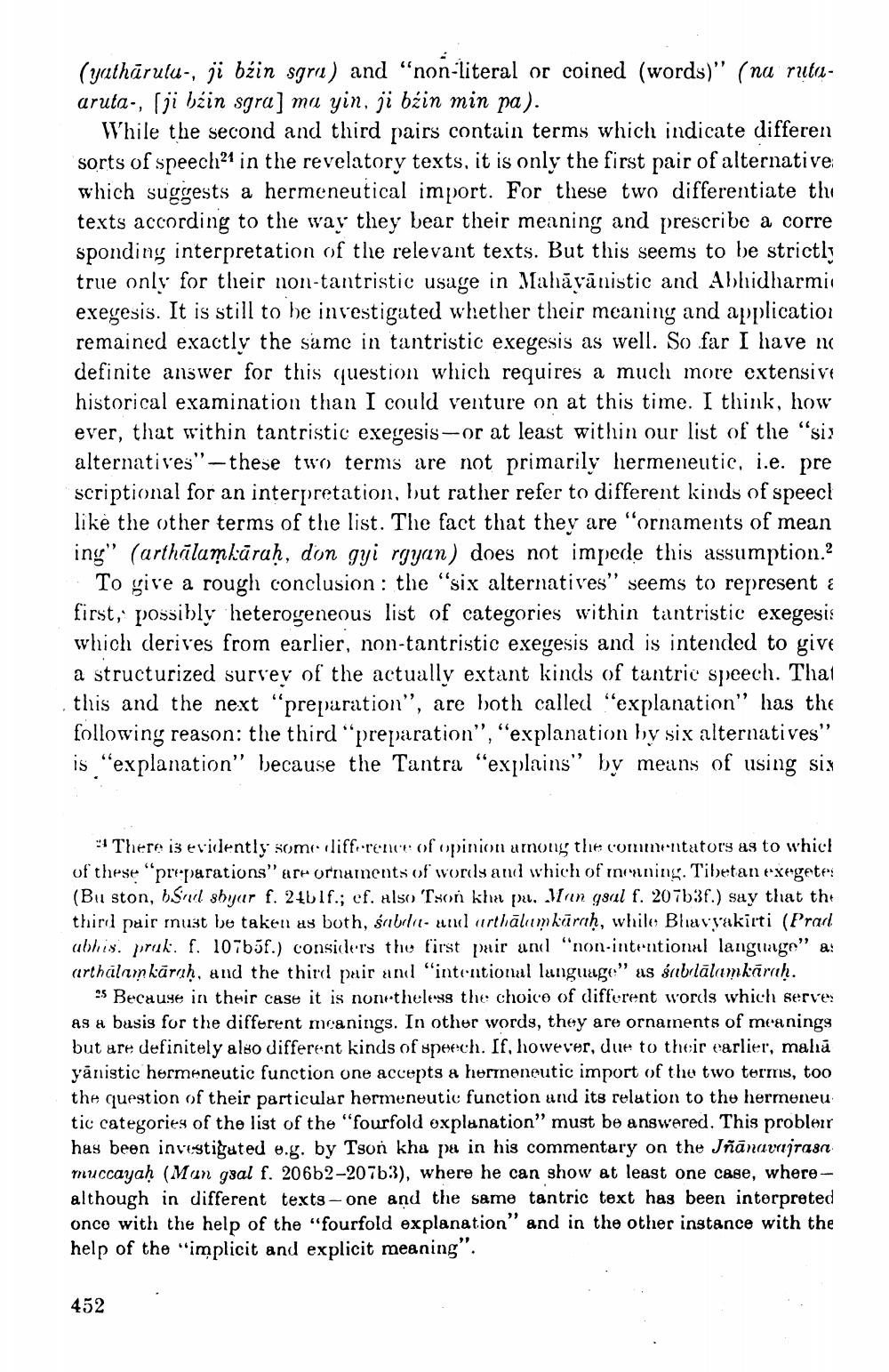Book Title: Remarks On Trantristic Hermeneutics Author(s): Ernst Steinkellner Publisher: Ernst Steinkellner View full book textPage 8
________________ (yatharula-, ji bźin sgra) and "non-literal or coined (words)" (na rutaaruta-, [ji bźin sgra] ma yin, ji bźin min pa). While the second and third pairs contain terms which indicate differen sorts of speech24 in the revelatory texts, it is only the first pair of alternative which suggests a hermeneutical import. For these two differentiate the texts according to the way they bear their meaning and prescribe a corre sponding interpretation of the relevant texts. But this seems to be strictly true only for their non-tantristic usage in Mahāyānistic and Abhidharmi exegesis. It is still to be investigated whether their meaning and application remained exactly the same in tantristic exegesis as well. So far I have no definite answer for this question which requires a much more extensive historical examination than I could venture on at this time. I think, how ever, that within tantristic exegesis-or at least within our list of the “si alternatives"-these two terms are not primarily hermeneutic, i.e. pre scriptional for an interpretation, but rather refer to different kinds of speech like the other terms of the list. The fact that they are "ornaments of mean ing" (arthalamkāraḥ, don gyi rgyan) does not impede this assumption.2 To give a rough conclusion: the "six alternatives" seems to represent first, possibly heterogeneous list of categories within tantristic exegesis which derives from earlier, non-tantristic exegesis and is intended to give a structurized survey of the actually extant kinds of tantric speech. That this and the next "preparation", are both called "explanation" has the following reason: the third "preparation", "explanation by six alternatives" is "explanation" because the Tantra "explains" by means of using six There is evidently some difference of opinion among the commentators as to which of these "preparations" are ornaments of words and which of meaning. Tibetan exegete: (Bu ston, bad shyar f. 24b1f.; cf. also Tson kha pa. Man gsal f. 207b3f.) say that the third pair must be taken as both, sabda- und arthālamkāraḥ, while Bhavyakirti (Prad abhis. prak. f. 107b5f.) considers the first pair and "non-intentional language" as arthalam kāraḥ, and the third pair and "intentional language" as śablālamkāraḥ. 25 Because in their case it is nonetheless the choice of different words which serves as a basis for the different meanings. In other words, they are ornaments of meanings but are definitely also different kinds of speech. If, however, due to their earlier, malā yanistic hermeneutic function one accepts a hermeneutic import of the two terms, too the question of their particular hermeneutic function and its relation to the hermeneu tic categories of the list of the "fourfold explanation" must be answered. This probleir has been investigated e.g. by Tson kha pa in his commentary on the Jñanavajrasa muccayaḥ (Man gsal f. 206b2-20763), where he can show at least one case, wherealthough in different texts-one and the same tantric text has been interpreted once with the help of the "fourfold explanation" and in the other instance with the help of the "implicit and explicit meaning". 452Page Navigation
1 ... 6 7 8 9 10 11 12 13 14
